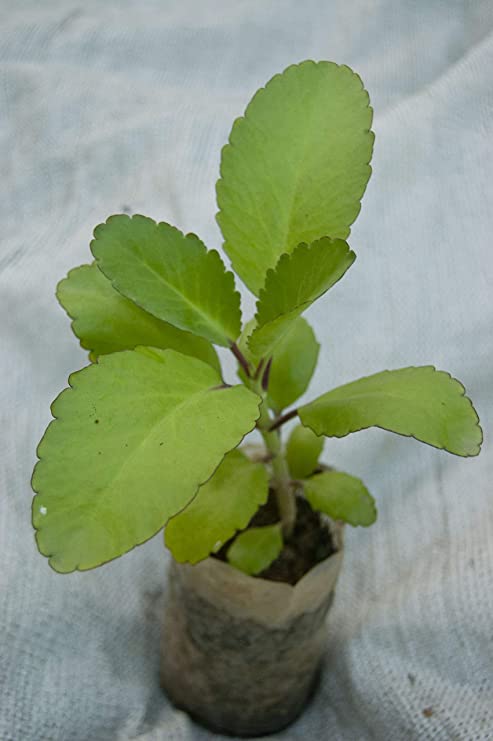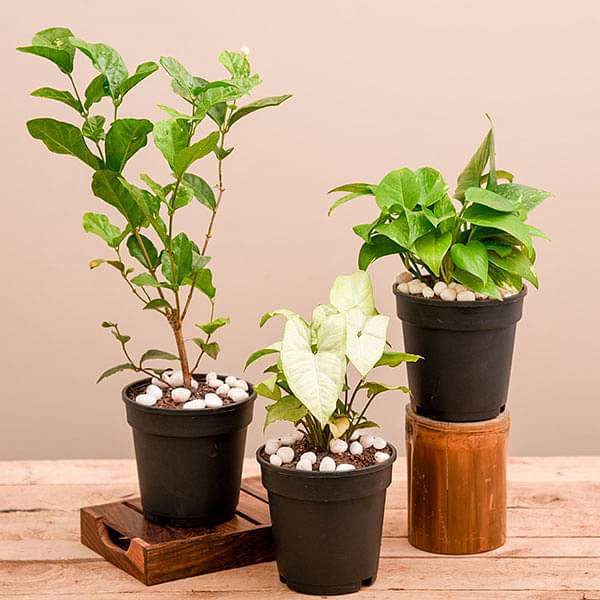Mother-of-thousands (Kalanchoe daigremontiana or Bryophyllum daigremontianum) is one of the less common succulent species grown in gardens. It stands out among other kalanchoe species with its highly unusual leaves, which are very large and lined along the outer edges with hundreds of tiny leaf-like structures. It is hardy in U.S. Department of Agriculture plant hardiness zones 9b and above, but it is rarely grown in home gardens because it is highly toxic and can fatally poison small pets, according to East Tennessee State University. As with most succulents, mother-of-thousands demands little attention, but it does need some special seasonal care to encourage blooming.
Things You Will Need
- 15-15-15 fertilizer
- Gloves
- Craft blade
- 6-inch pot with drainage holes
- Sterile compost
- Perlite or coarse sand
- Plastic bag
Basic Bryophyllum Daigremontianum Care
According to the University of Missouri, most kalanchoe species share similar care requirements, and mother-of-thousands is no different. It will survive dry conditions with no trouble but will look better if watered regularly. Water whenever the soil looks dry on the surface, adding water until it trickles from the bottom of the pot. If the pot sits in a catch basin, empty it out after watering so the pot isn’t sitting in water. Reduce watering in autumn and winter, letting the soil nearly dry out completely between waterings.
Mother-of-thousands will grow well without fertilizer but regular, light applications of balanced fertilizer throughout the growing season will help boost its growth. Logee’s Plants recommends feeding with 1/2 teaspoon of water-soluble 15-15-15 fertilizer diluted in 1 gallon of water. Apply the fertilizer solution to wet soil every two weeks during the spring and summer months when the plant is actively growing. Discontinue feeding in late summer so any new growth has time to mature before cooler weather sets in.
Seasonal Bryophyllum Daigremontianum Care
Mother-of-thousands will occasionally produce 1-foot-tall , umbrella-shaped flower stalks covered in bell-shaped flowers in shades of burgundy, red or mauve. Flowering is unpredictable and irregular, but the National Gardening Association suggests that the flowers naturally occur between late summer and early winter. As with other kalanchoe species, mother-of-thousands is most likely to bloom when it is exposed to prolonged periods of darkness. Most modern homes do not naturally stay dark enough to induce blooming, so it requires a little extra effort to make these plants bloom.
Keep them in total darkness for 14 hours each day followed by 10 hours of very bright light from mid-autumn until mid-winter. Water the plant very little during this induction period, allowing the soil to dry out almost completely between waterings. The following spring, move the plant to a bright and sheltered location outdoors during the summer months. Keep it well watered and move it back indoors in autumn before nighttime temperatures dip below 60 degrees Fahrenheit.
Starting Bryophyllum Daigremontianum Plants
Mother-of-thousands propagates best from leaf cuttings, according to the Illinois Extension. Choose a leaf that is 2 to 4 inches in length. Wear gloves to protect your skin, and slice off the leaf using a craft blade. Set the leaf on a sheet of newspaper in a dark, dry place for a few days until the cut-end dries out. Callusing or drying the leaf cutting will help keep it from rotting during the rooting process.
Fill a 6-inch plastic pot with a moistened mix of half sterile compost and half perlite. Stick the cut end of the leaf cutting into the growing mixture until the bottom half of the leaf is completely buried. Cover the pot loosely with a large plastic bag, and set it in a bright location out of direct sunlight. Mother-of-thousands leaf cuttings rot easily when overwatered, so add water only when the soil feels dry beneath the surface. Check for roots starting in four to six weeks.








Reviews
There are no reviews yet.